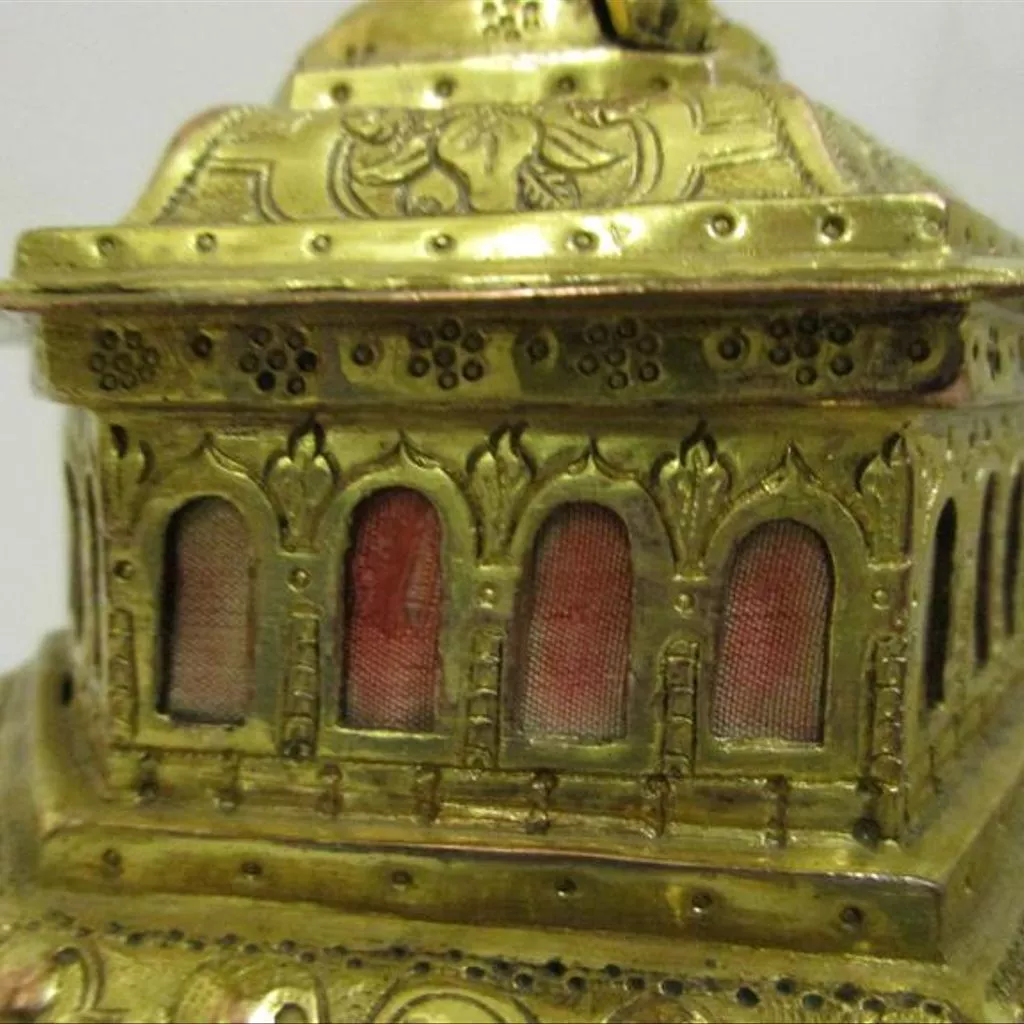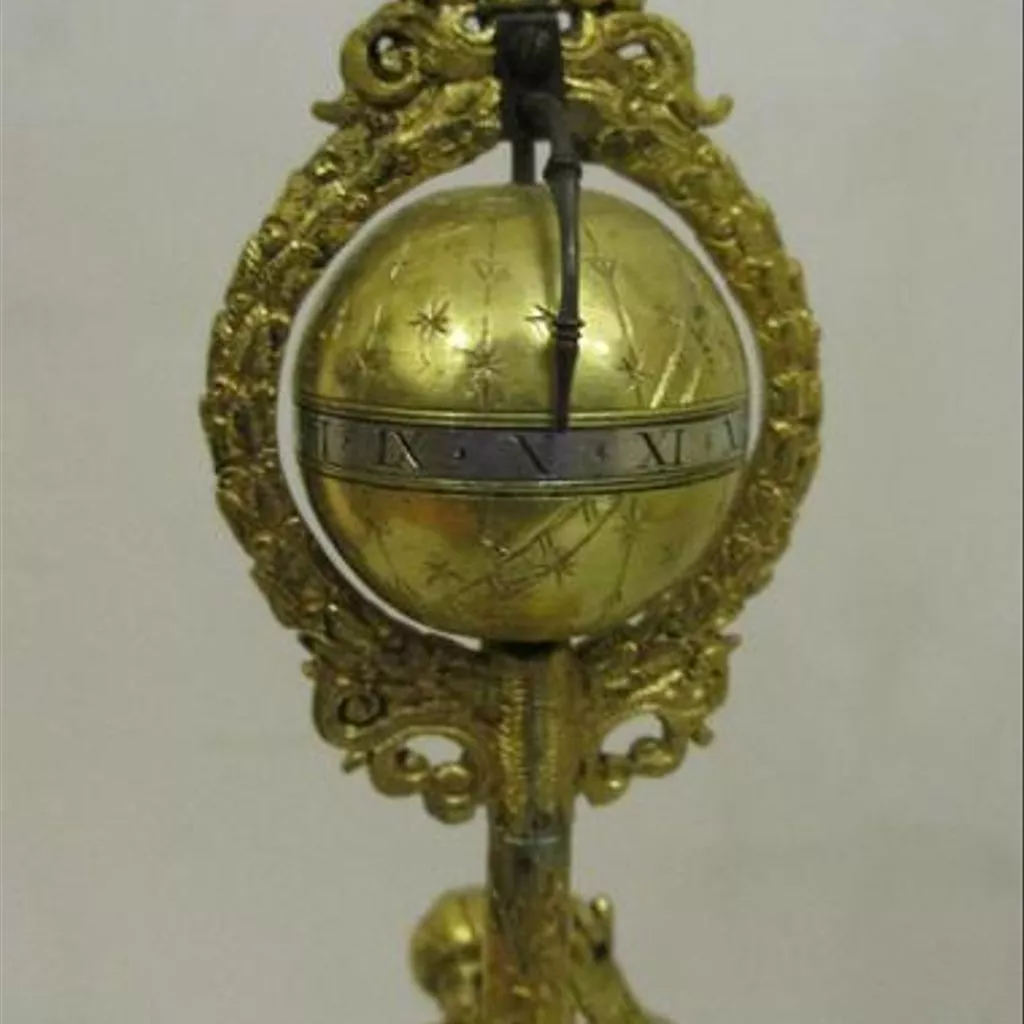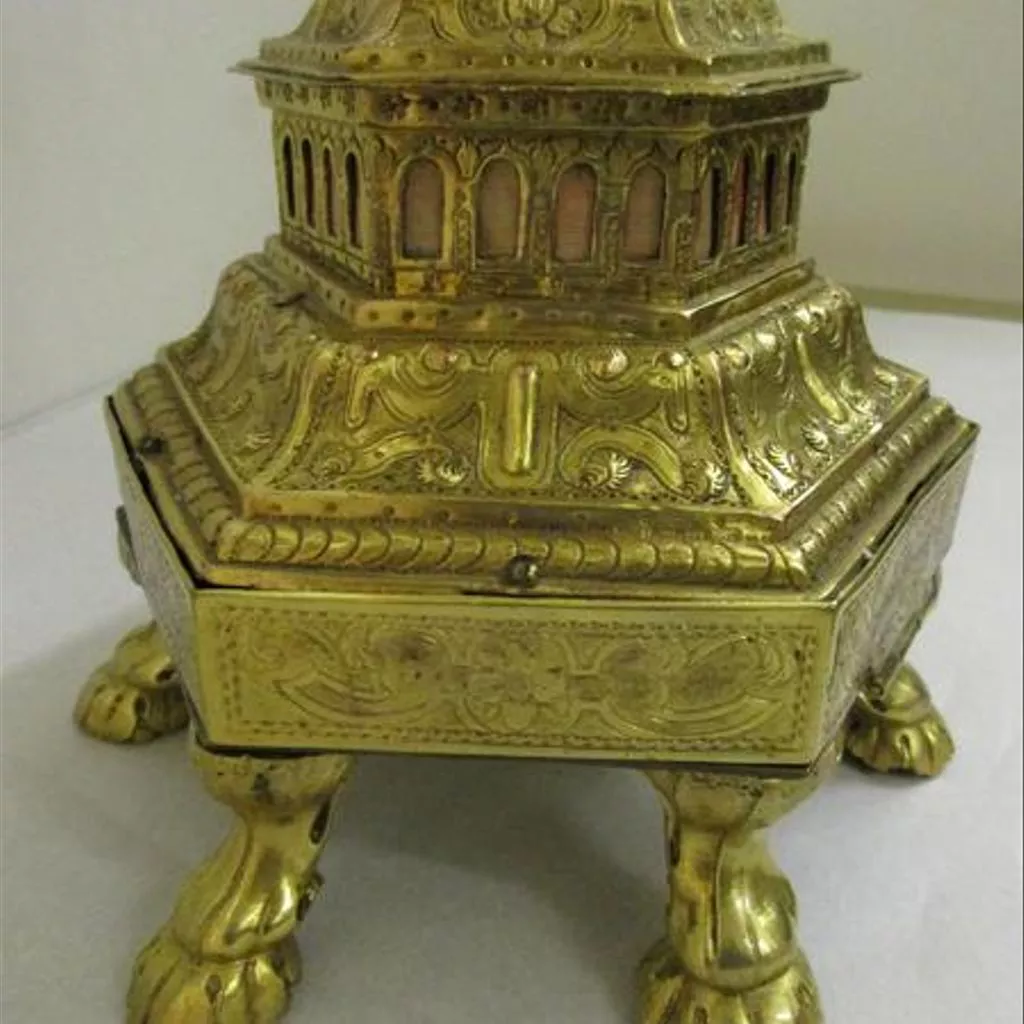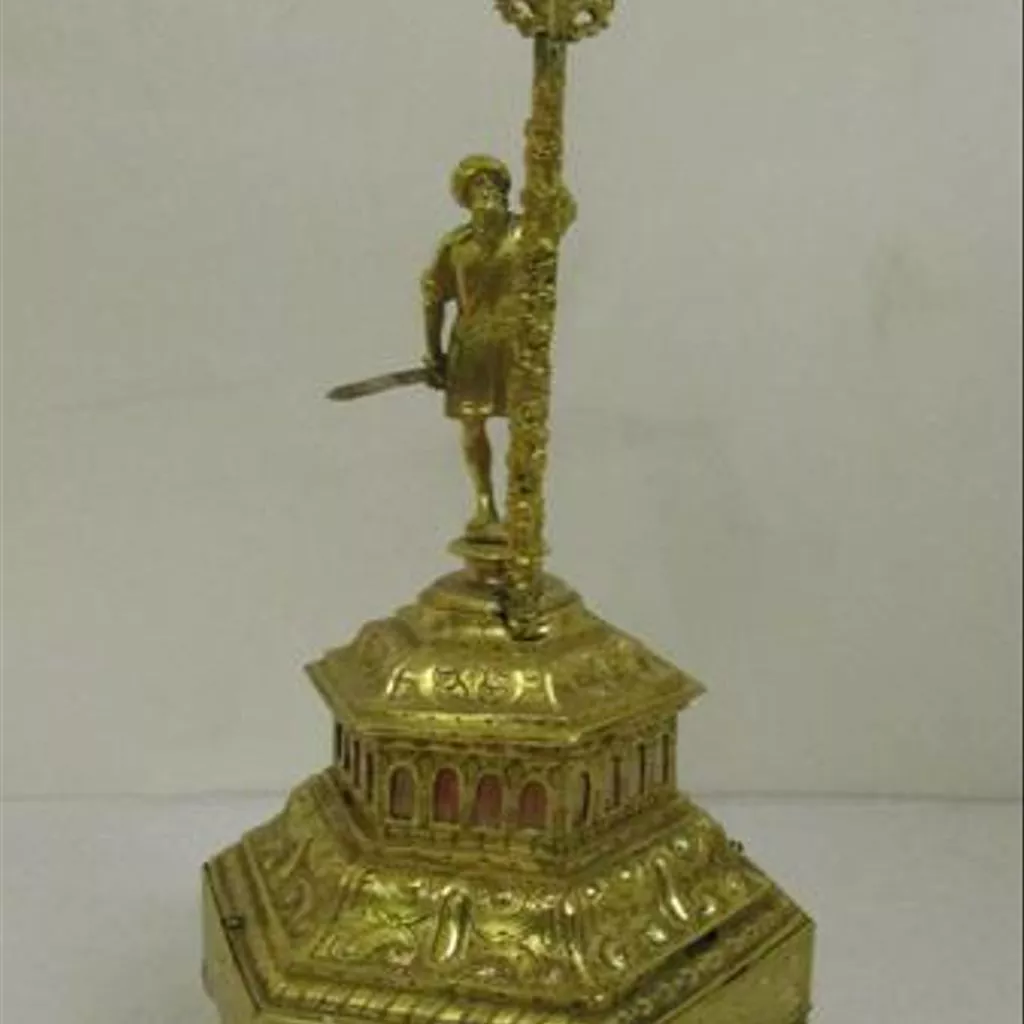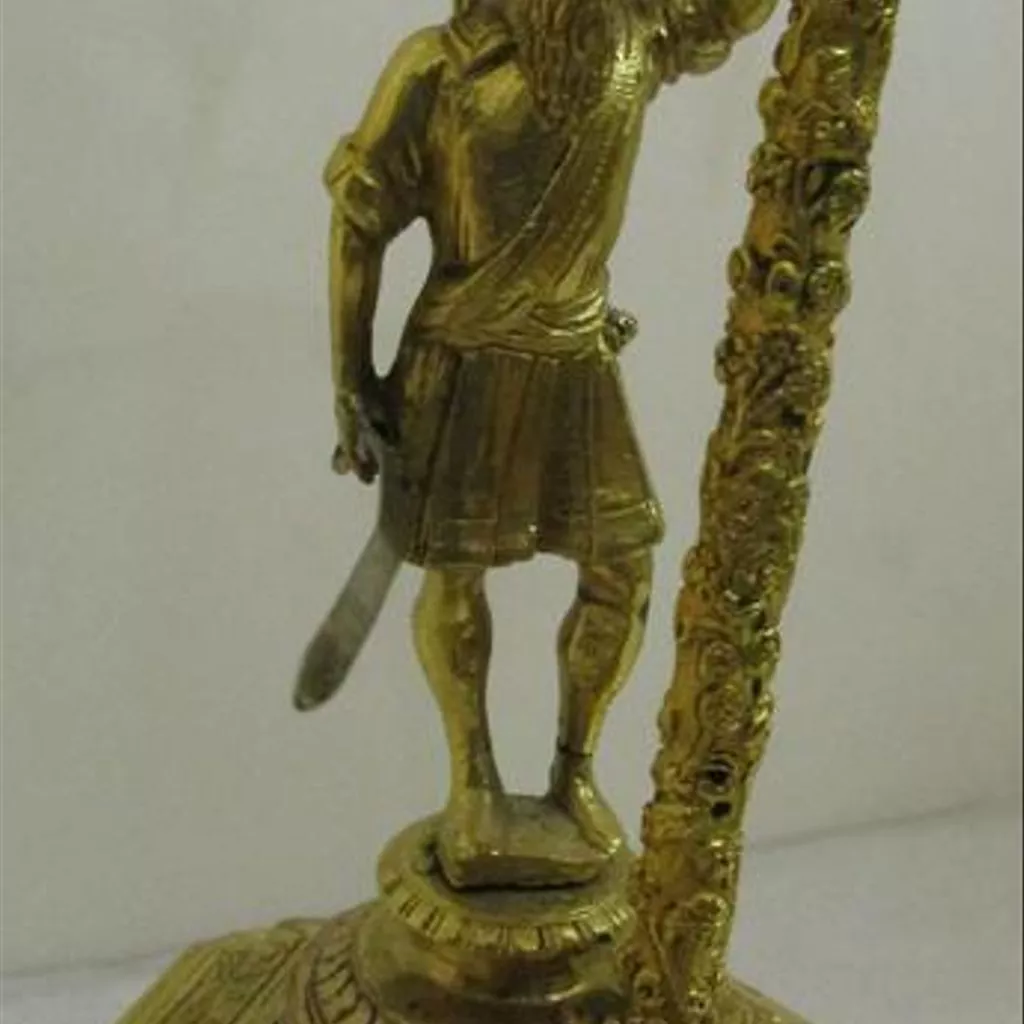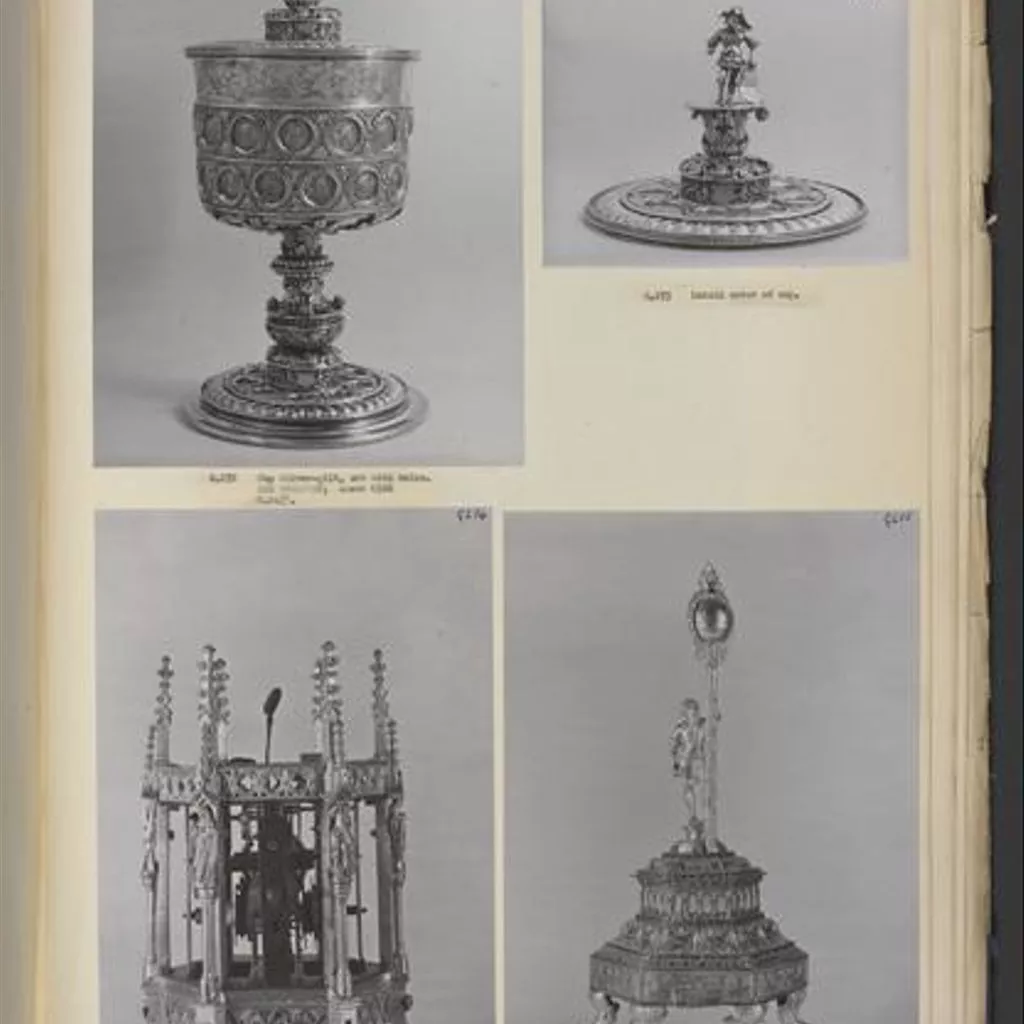Description
Case and Dial: Gilt copper and brass. Hexagonal case, the vertical portions engraved, the sloping sides cast and chased, and including an arcaded gallery lined with red silk. The case is supported by six large feet and surmounted by a bearded figure of a Turk, with sword in right hand and upraised left hand which formerly held a spear or pointer. A chased vertical column supporting a globe with a silver equatorial hour-ring marked I to XII with stars at the half-hours; this globed framed in a fixed cast and chased vertical ring. The hour was formerly indicated by the tip of the Turk's spear or pointer, but is now shown by a curved iron pointer screwed to the vertical ring.
Movement: Mounted between a hexagonal plate and a circular brass disc 7.3 cm in diameter. Going train of brass, with fusee of 5 turns and chain, verge escapement, steel balance-wheel and now with a balance-spring of few turns and a simple regulator.
Bridge balance-cock with part of a ring cut away to show a "pendulum" action with a disc attached to a spoke of the balance-wheel.
A 22T wheel on the fusee arbor engages with a 48T-wheel at the bottom of the vertical arbor which rotates once in 12 hours and passes up the column to the globe above its top. The star wheel for strike unlocking is fixed to this arbor. Striking train of brass, of the count-wheel type, with resting barrels, the count-wheel cut for a sequence 1 to 12.
A table clock formed as a pillar supporting a globe on an hexagonal pedestal surmounted by a bell on which the hours are marked. At the base of the pillar is the figure of a standing Turk, South German, abour 1580. The figure of a Turk is a reference to the Venetian victory over the Turks at the Battle of Lepanto, 1571. From the Soulages Collection, 1856.
Table-clock with figure of a Turk, South German, early 17th century.






